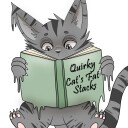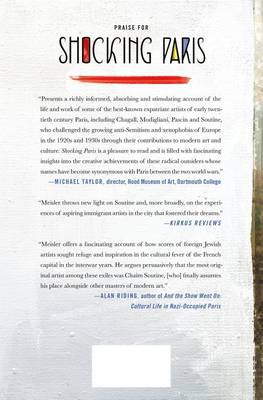
Quirky Cat
Despite the description, this book mostly focuses on Soutine, with slight diversions to the other artists mentioned in the title (as well as a couple of others). I personally was ok with this, as the time spent with Soutine really brought him to life for me. There was so much I hadn’t known previously about him or his works, so I really appreciated this in-depth look at his life. The information about the events going on at the same time (the growing anti-Semitism, World War II, etc) really helped to give context to all of his works. Context I had never heard of. It brought a whole new understanding to his works, as well as a new level of appreciation for them.
There is a lot of focus in this book on Jewish artists and the effects of anti-Semitism on them and their works. This is not something I had been aware of previously; it was never mentioned in any of my numerous art history classes. So I found myself utterly enthralled at the sudden exposure to so much information.
One thing I particularly enjoyed about this novel was Meisler’s choice to also include information about the art dealers. I agree with his interpretation that art dealers have a lot to do with an artists’ success or lack-thereof, so including the influential ones of the time is vital. Without them you risk missing fundamental parts of an artist’s story.
As mentioned above, Soutine is the focus of the novel. Amadeo Modigliani and Marc Chagall also get a couple of chapter’s (each) of their own, but the attention to them is clearly on their connections to Soutine. Essentially; the information provided about the two artists provides further context for Soutine’s biography. They had to be mentioned.
Many other artists are mentioned in passing. Some would argue these artists (such as Picasso) are actually bigger in name and possibly should have been given more attention. Considering it isn’t hard to find information about these artists, I’m ok with Meisler’s decision to briefly touch upon them and then move on.
I have to confess, there’s one sentence in particular, out of the whole book that absolutely broke my heart: “When World War II ended, Chagall was the only School of Paris painter of international standing still alive.” I don’t think I need to explain why that quote hurt me as much as it did.
Overall I found that Shocking Paris was a really interesting and worthwhile read. While the focus was slightly different than I anticipated, I still enjoyed it and actually agreed with many of the choices Meisler made when it came to details mentioned.
For more reviews, check out Quirky Cat's Fat Stacks
